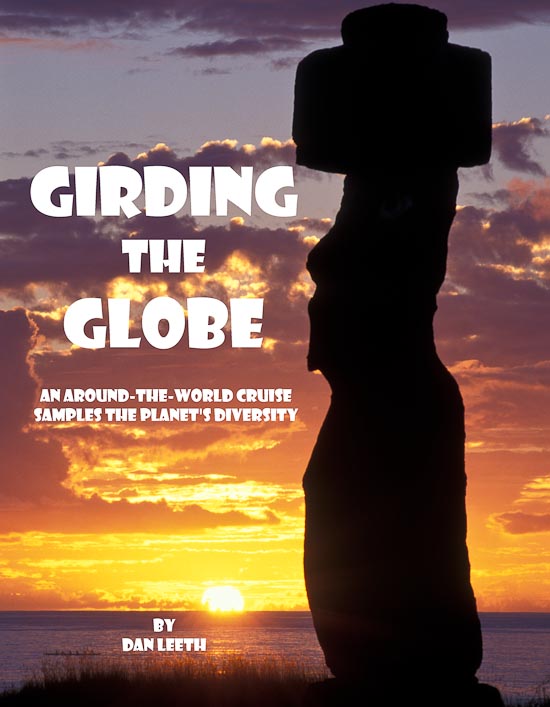
Jet-lagged and cranky, I lingered more than two hours in line waiting to trade my passport for a cabin key. When I finally unlocked my shipboard stateroom, I found the quarters dolefully furnished in a ’50s motif of faded Formica and stuffed Naugahyde. It reminded me of the Bates Motel in Hitchcock’s Psycho.
I would have chanced a shower, but my luggage hadn’t yet arrived. It seemed to be as lost as Jimmy Hoffa, interred in a mausoleum of satchels, duffels, trunks and suitcases that stood floor-to-ceiling in the reception area.
Just when I thought it couldn’t get worse, I learned that the executive chef was English. I envisioned four months of dining on kidney pies while waiting for clean underwear to arrive.
Such was the inauspicious start to my trip of a lifetime — a dream cruise around the world.
Since Ferdinand Magellan captained the first globe-encircling voyage in 1519, travelers have longed to circumnavigate the planet by sea. Several firms now offer world cruises. Itineraries vary, but most have one commonality– they are palatially expensive.
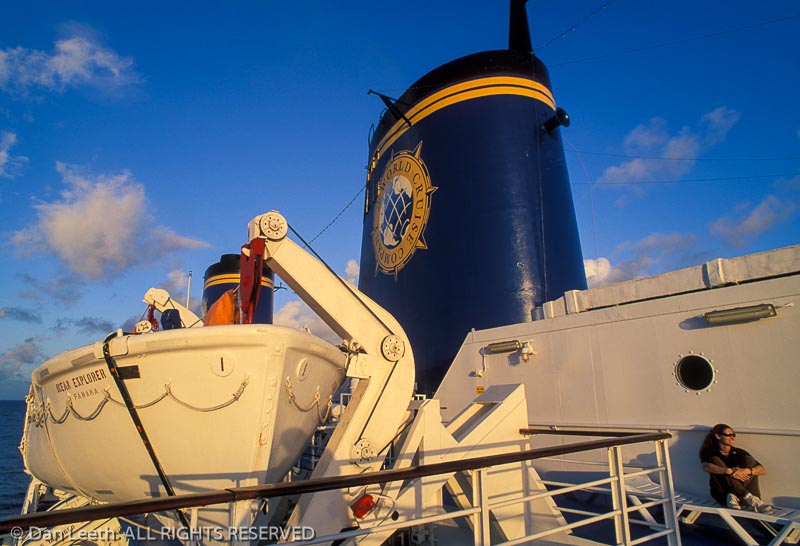
Then along came the now-defunct World Cruise Company. By chartering older vessels and abridging amenities, the Toronto-based outfitter planned to offer around-the-world voyages at down-to-earth prices. With rates starting at about $100 per day, a lifelong fantasy could become reality.
But nightmares came first. Needle-jabbing nurses used my arms as immunization pincushions. I had to order extra passport pages and a slew of advance visas. Suitcases needed to be packed, unpacked and repacked until they squeaked under airline weight limitations. Ultimately, hurried good-byes and a flight to Athens led to one long-anticipated moment.
Along with 600 others, I boarded the Ocean Explorer I in Greece. After a frustrating initiation, the journey began.
Tunis, capital of Tunisia, became our first port of call. Formerly controlled by the French, this North African coastal city offers European-style prosperity springing from Arab, Roman and Phoenician roots. Islamic but liberal, Tunis is where sheiks come to be sinful.
A tour guide led us through the ruins of Carthage, a Phoenician city so old it had been sacked by the Romans before the birth of Christ. Next came the Bardo Museum and its collection of ancient mosaics. For one shopper, this was too much sightseeing. She dashed into the museum’s book shop in a desperate quest for souvenirs. To pay, she flashed American cash. When the clerk said he could only accept Tunisian dinars, the woman became indignant.
“I can’t believe they wont take real money,” she moaned.
“This is a foreign country,” I suggested. “I doubt Barnes & Noble takes Tunisian currency back home.”
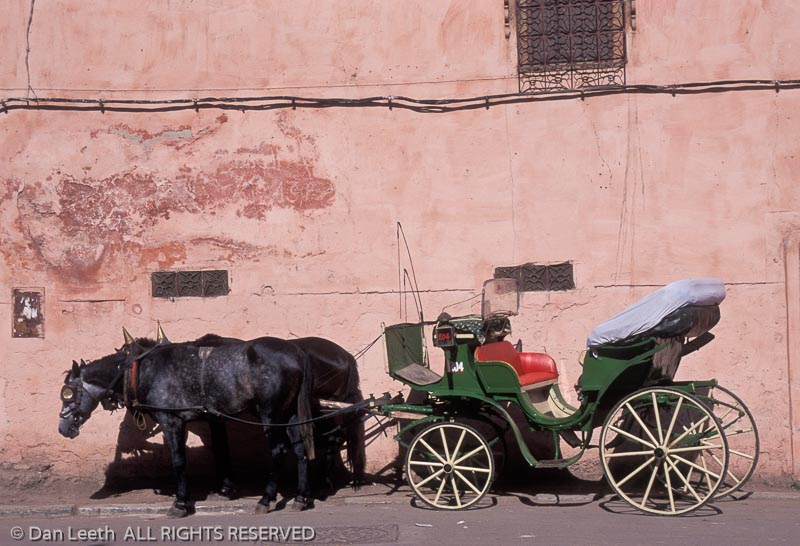
Exiting the Mediterranean, we passed Prudential’s Rock of Gibraltar on our way to Casablanca, Morocco. There, I signed up for a 12-hour bus trip to Marrakech, a vibrant city whose buildings echo the ruddiness of desert clay. As we wended our way there across the Saharan emptiness, our tour guide, Mohammed, bragged how Islamic men could have up to four wives. Eventually, one of the passengers had enough.
“That’s nothing,” the man shouted. “In North America, there is no limit to the number of wives we can have.”
“Really?” Mohammed looked puzzled.
“Sure. We just have them one at a time.”
Serial polygamy was even promoted onboard the ship. A plaque on the bridge assured potential newlyweds that marriages performed onboard lasted only for the duration of the cruise.
This ship’s initial passengers did not have such options. Built in 1944, the vessel began its life as an American troopship hauling soldiers to World War II. Since then it has been refitted and refurbished into an ocean liner.
Old enough for AARP membership, the craft showed its age. Plumbing sputtered and ventilation wheezed. Threadbare carpets revealed years of stains, and paint barely concealed bathroom rust. The shabby conditions caused some to cancel passage and leave in disgust. Others shared their unhappiness, whining to anyone who would listen. I took it all in stride. For what we were paying, I could not expect opulence. Besides, the scruffiness reminded me of home.
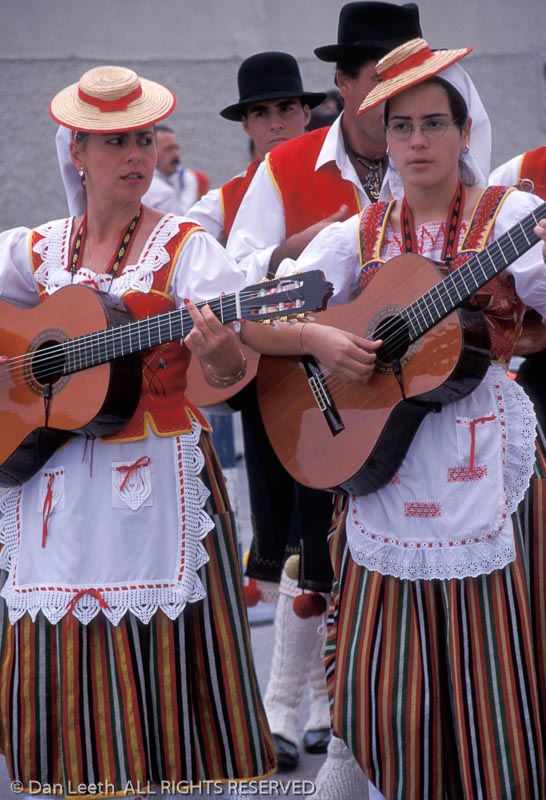
On day 10, we reached the Canary Islands, a Spanish beach playground off Africa’s northwest coast. Rather than take a tour, I opted to spend the day sauntering solo through the port city of Santa Cruz de Tenerife. Its sidewalk cafes, fountained parks and shady promenades provided a refreshing touch of Europe. Even though most places took dollars, I found an ATM and bought local currency. It felt liberating to escape fellow passengers.
Unfortunate for my waistline, one of my initial fears proved unfounded. The meals cooked by our English chef tasted fine, although some dishes were not what one expected. This especially applied to desserts. The tollhouse cookies, for example, contained nary a chocolate chip, and the pumpkin pie was best described as, “It sort of tastes yellow.”
The worst culinary disaster was the coffee. The muck brewed onboard came from beans that must have been ground beneath Juan Valdez’s mule before being dumped aboard as bilge ballast. Greenpeace would have never allowed this foul substance to be spilled overboard for fear of killing whales.
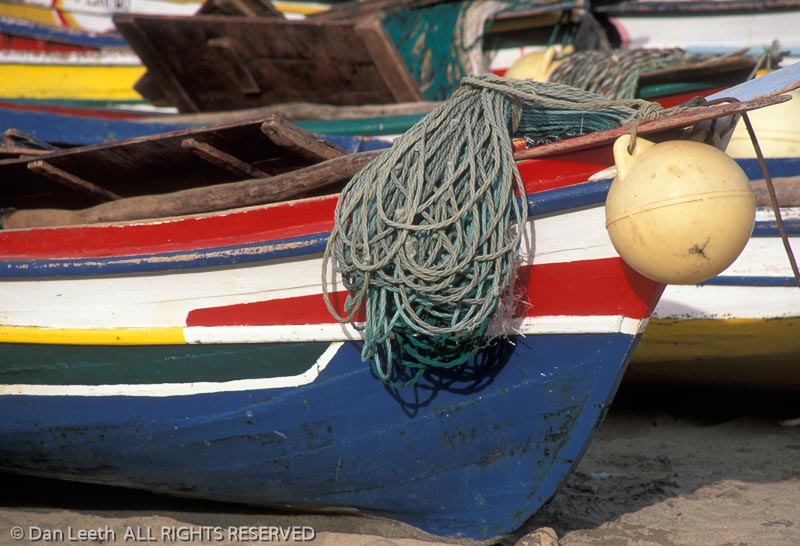
Our last stop in the eastern Atlantic was Cape Verde, a former Portuguese island colony located off the coast of Senegal. In slave-trading days, African natives came through here on their way to Brazil.
Many of us crammed into pregnant minivans for an all-day, cross-island tour. In spite of cheek-to-cheek seating, the trip proved delightful. The island’s arid, volcanic landscape reminded me of Arizona. Everywhere we drove, smiling, colorfully dressed residents stood by their homes and waved. Best of all, we did more sightseeing than shopping. It was a perfect “guy trip.”
For six full days we crossed the Atlantic, and as it was throughout the journey, the time at sea was pure pleasure. Professional lecturers and retired professors gave talks about the science, culture and history of the places we visited. Passengers and staff taught classes on writing, dancing, painting and more. Between brain stimulations, there was time for reading, sunbathing and swimming.
At sunset, some poured drinks and gathered on deck. Eyes gazed westward in hopes of catching the elusive “green flash,” a teal burst that can occur when the top of the solar disk touches the horizon. Those with stronger drinks claimed more sightings.
After dark, some of us searched for the Southern Cross. Others retreated to the lounges where musicians performed everything from Frankie Avalon to Frank Zappa. The ship’s theater offered standard cruise-fare stage productions featuring magicians, comedians, cabaret singers or concert pianists. We even had guest speakers onboard.
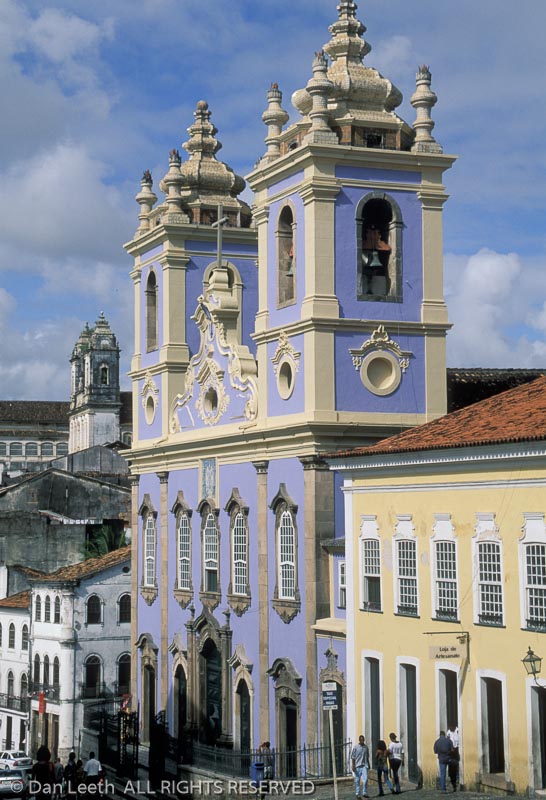
Salvador became our first Brazilian port. Built on cliffs, this former colonial center features a color-splashed historical district. As I wandered around, a school-age lad approached. In his native Portuguese, he told me what I was looking at, but I failed to comprehend a single word.
“Obrigado,” I thanked him, and walked on.
He followed, intent on providing a guided tour. Assuming he was freelancing, I offered money, but he refused the payment. The two of us continued through town. He explained the sights in his local language. I responded as best I could in a meld of pidgin Portuguese and Taco Bell Spanish. He grinned, graciously pretending to understand.
On world cruises, most port stops last only one day, and plans can be dashed if the weather proves uncooperative. Such was the case in Rio de Janeiro.
We arrived on Sunday, and I had hoped to go birding. Our onboard aviary expert said Rio’s sugar-sand beaches should be rife with curvaceous, string bottomed chickadees. Unfortunately, gloomy drizzle greeted our arrival, and the only species I spotted were gaggles of Speedo-briefed beach roosters strutting plump plumage on shoreline volleyball courts.
Buenos Aires proved much sunnier. Parks, monuments and outdoor cafés fill Argentina’s colorful and cosmopolitan capital. Here, fabric shrinkage seemed to be endemic. I encountered hundreds of young women whose apparel fit so tightly, if they had a peso in their pockets, I could read the year it was minted. It’s no surprise that anorexia is rampant in this Paris of the South.
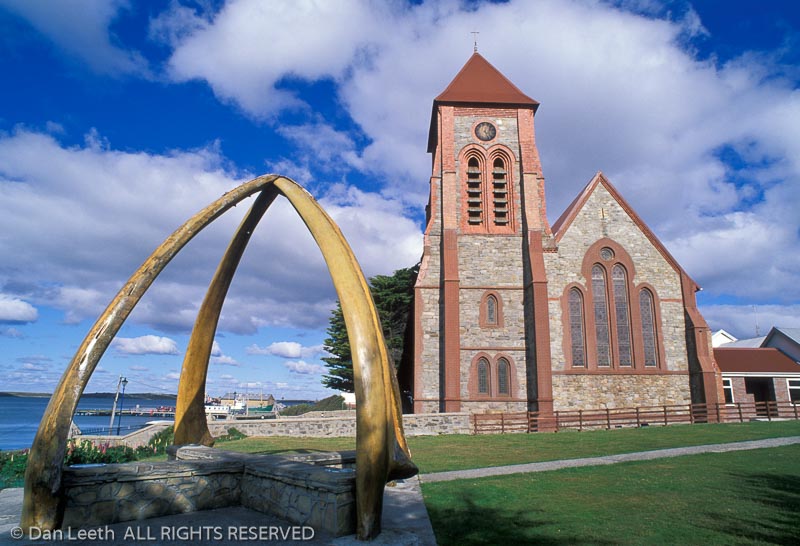
The windswept Falkland Islands became our first English speaking port. Looking at the barren landscape, I wondered how anyone but the British could desire such a desolate outpost.
But the Argentines apparently did. Two decades ago, their soldiers invaded the Falklands, battling the English in what one reporter said was akin to two bald men fighting over a comb. Temporarily victorious, the first thing the Argentines did was require traffic to drive on the right side of the road. A few months later, the British liberated the islands and restored left-lane motoring.
Steaming south, we crossed the Drake Passage, the 600-mile gap between South America and Antarctica that is billed as the roughest water on earth. Passengers downed Dramamine, wrapped wrist bands and plastered on patches, all in a desperate attempt to alleviate seasickness. Only when we reached frigid Antarctica did seas and stomachs calm.
In the South Shetlands, inflatable Zodiac boats unloaded us on a rocky Antarctic beach. There, we watched three-ton elephant seals lounge like lard-bellied couch potatoes while tuxedoed penguins strutted by like midget maître d’s.
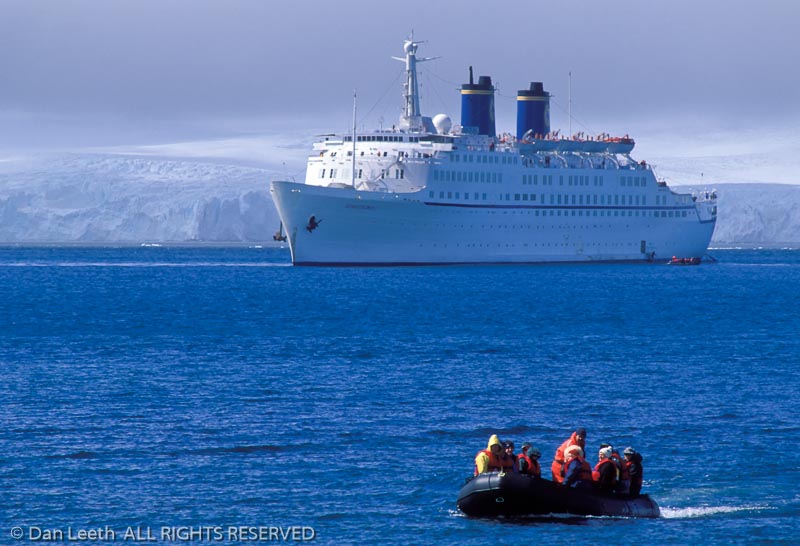
In the cool of Antarctica, our geezerly ship showed its years. A few cabins received enough heat to turn them into Finnish saunas. The ducts in mine, however, exhaled less warmth than a zombie’s breath. I kept hoping the menopausal heating system would have a hot flash, but it never did.
We recrossed the Drake, passed Cape Horn and headed into the Beagle Channel off the island of Tierra del Fuego. After stops in Ushuaia, Argentina, the southernmost city in the world, wecontinued through the Straits of Magellan and on to Punta Arenas, Chile.
On day 48 we headed up the Patagonian coast through the incomparable Chilean fiord country. Its dark passages dripped with glaciers, ice chutes and waterfalls. Although temperatures hovered slightly above freezing, I spent as much time as possible on deck. With no cabin heat, it felt cozier outside.
As we turned to cross the Pacific, the journey dove to a low. Not only was the room colder than my ex-wife’s stare, but the coffee quality tumbled from ghastly to worse. Rather than using beans, the cooks began making the brew from a bottled syrup that resembled crankcase-drained Pennzoil. I sipped the loathsome liquid only for warmth. Fortunately, Polynesia loomed ahead.
The ship began reeling, its course pummeled by the dual punches of the Humbolt Current meeting a South Pacific gale. Spray flew as the bow jabbed and lurched through churning swells. Passengers staggered, dishes tumbled, and lunches were lost in more ways than one. From the safety of my cabin, I gazed awestruck at Neptune’s fury.
On the journey’s 55th day, we reached Easter Island. This was our first overnight stop, and many passengers seized the opportunity to sleep ashore. For once we could dine on fresh seafood and sip coffee that didn’t taste like Jiffy Lube sludge.
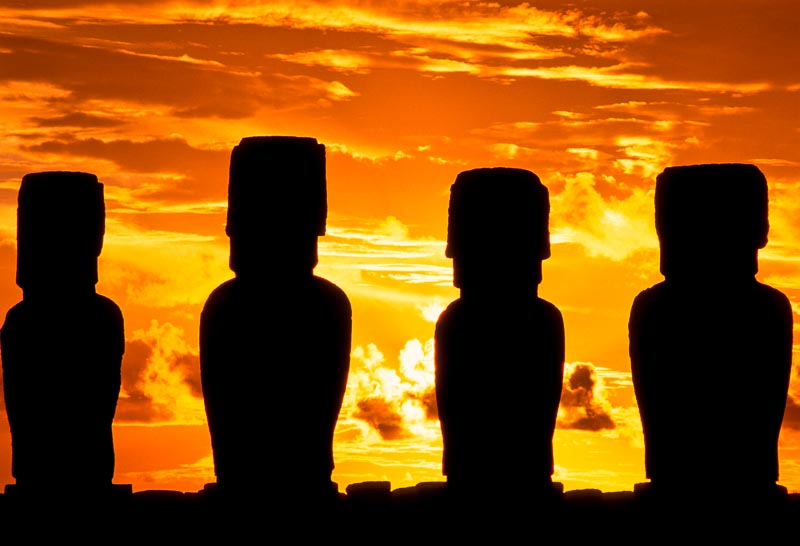
Mysterious stone effigies called moai have made Easter Island famous. Sculpted centuries ago, these statues can stand 32 feet tall and weigh 80 tons or more. Scientists have debated why primitive Polynesians carved the moai and erected them around the island. Personally, I believe it was a preliterate Chamber of Commerce ploy to reward us tourists for journeying to the most isolated isle on earth.
Easter Island’s nearest inhabited neighbor, Pitcairn Island, lies 1,200 miles away. On this two-square-mile hunk of rock, mutineers from the Bounty came to hide in 1790. Fifty of their descendants still live there. We were to go ashore, but rough seas precluded a landing.
Since we could not visit the island, the islanders came to us. They brought goods to sell — clothes, carvings, books, stamps, postcards and even plaques bearing scraps of the HMS Bounty. A shopping orgy exploded on deck. When the spree finally ended, the islanders held wads of green and the ship looked like a Pitcairn Island T-shirt emporium.
Although every age cohort was represented onboard, the majority of our passengers had long been receiving Social Security checks. While the kids behaved like grown-ups, many of the adults acted like spoiled adolescents. They squabbled, bickered, fussed and complained about everything from saving seats to tipping.
The biggest problem, however, was theft. Personal property seemed safe, but items belonging to the ship or staff vanished with regularity. Passengers ripped out sections of guidebooks for their own use. Someone pilfered the VCR used by instructors, then allegedly threw it overboard. Reference materials and dictionaries disappeared from the ship’s library while maps and notices vanished from walls. One brazen thief even stooped to swipe Christmas tree tinsel from the ship’s chaplain.
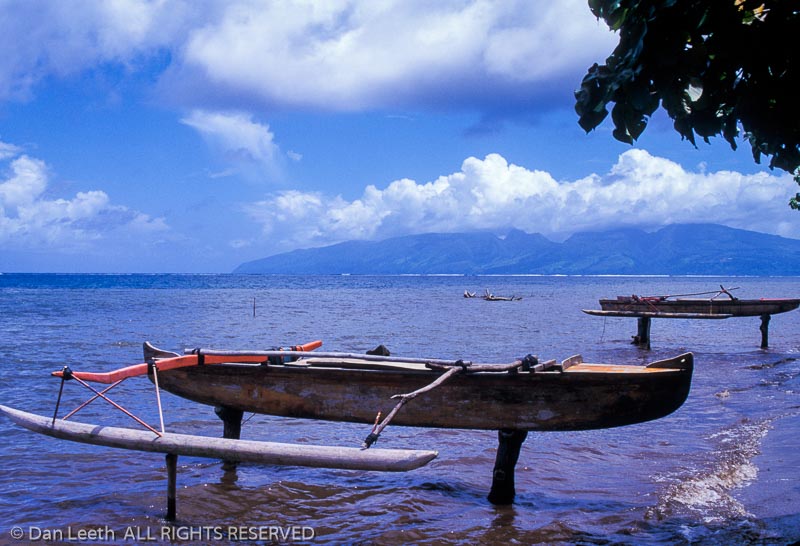
We soon sampled the siren isles of the South Pacific. In Tahiti, I rented a car and explored the land that inspired Gauguin and drove the Bounty crewmen to mutiny. As I pedaled a bicycle around Bora Bora, locals greeted me with smiling bonjours. In the Fiji Museum, I saw cannibal forks used at a 19th-century dinner party whose guest of honor and main entrée was a Methodist missionary. Off New Caledonia, I got a wet-dry double feature as I snorkeled near a catamaran on which several bikini-clad lasses lounged. Below the surface, it was A Fish Called Wanda. Above, it looked like out-takes from Baywatch.
A torrential downpour dampened our arrival to Australia’s Great Barrier Reef. There I discovered that snorkeling in a deluge could be fun, in spite of a chilling, pelting rain-driven back massage.
Near Darwin on Australia’s north coast, I took a river tour to see man-eating crocodiles. I had high expectations, but the guide said we would not be allowed to toss disgruntled passengers to the toothy reptiles.
Actually, most of my shipmates were pleasant to be around, and after months of prison-close confinement, we knew each other by face if not by name. With some I bonded well. Others I found as endearing as in-laws and prayed we would never cross paths again. They probably felt the same.
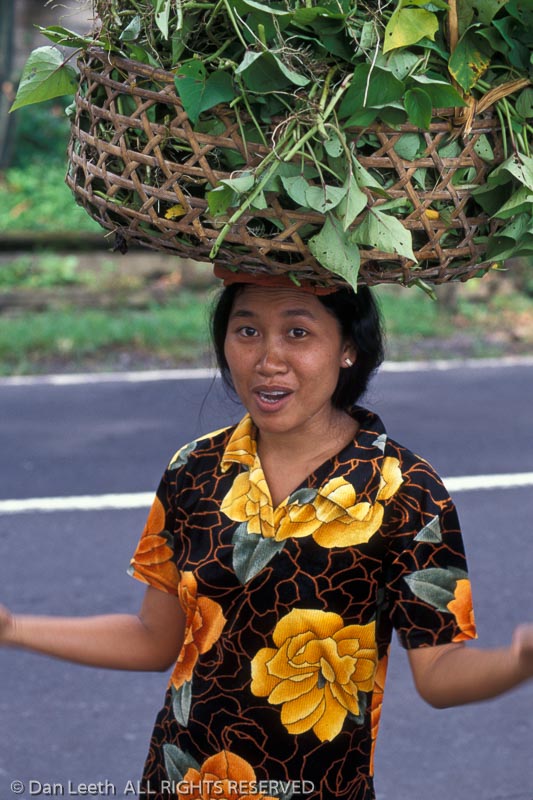
Bali, my favorite shipmates’ favorite port, came next. On this Indonesian island, rice paddies terrace volcanic hillsides, sacred monuments rise godward, dinner can be had for $5, and everywhere the people seem honest and genuinely amicable. Friendly, sacred, scenic and cheap, I had to agree Bali offered a touch of paradise.
The biggest deterrents to enjoying the island were the hoards of vendors who greeted our arrival. As I stepped ashore, a clutch of walking Walmarts swarmed me like flies heading for a steaming cow-pie. These sidewalk salespeople proffered blue-light specials such as three T-shirts for $10, four ball caps for $5 and “genuine” Rolex wristwatches at two for $15. Show interest in their products and they latched on like swamp mosquitoes slurping a nudist. I was lucky to escape solvent.
After stops in Java and Singapore, we hit Sri Lanka, the island nation southeast of India. The country was enduring an ethnic civil war, but our main danger was not bullets and bombs. It was deadly traffic. I spent a white-knuckled day riding with shipmates to the interior to see the ruins of Sigiriya. There, a fifth century ruler, who also feared for his life, built a stronghold atop a 600-foot-tall stone monolith. At least he had 500 dancing concubines to allay his worries.
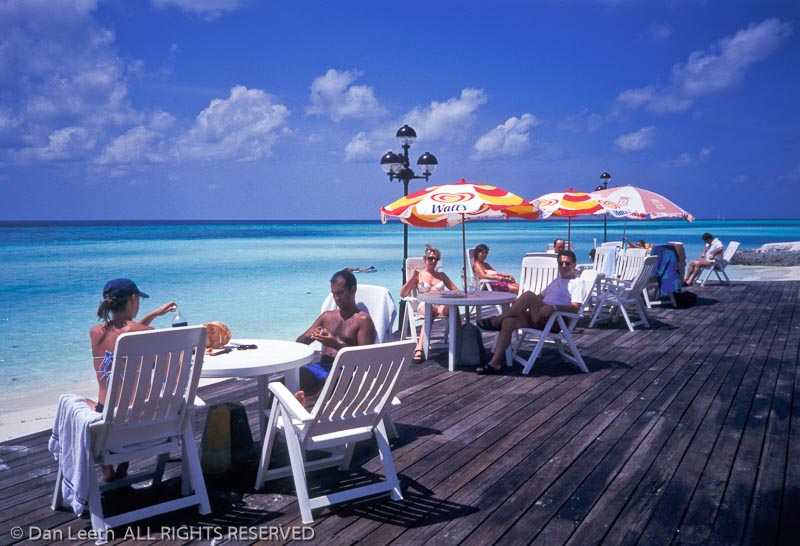
Residents of the Maldives have a wetter fear. The highest point in their chain of atolls towers only six feet above the Indian Ocean. If global warming causes seas to rise, these folks may have to snorkel to bed.
After calling on the mountainous Seychelle Islands, the ship docked for three days in Mombassa, Kenya. Many passengers departed for brief game safaris. A friend and I opted instead for an overnight visit to the Tanzanian island of Zanzibar.
We spent an afternoon exploring Stone Town, a timeworn Arab seaport that once served as the capital of Oman. Small shops lined narrow streets, and vintage buildings bore exotic carved doors.

The following morning, we took a taxi out to a preserve for Zanzibar red colobus monkeys, one of Africa’s rarest primates. Locals call them poison monkeys and believe that after the animals feed in an area, plants and crops will die. For the hour we watched them flit through trees, the only thing dying was time.
Our driver dropped us at the airport for our return flight to Mombassa. We secured boarding passes and seat assignments, then paid departure taxes and cleared immigration. Finally came security check.
A military officer directed us one at a time to an armed soldier who stood behind a small table. My friend went first. He opened his bags, talked, smiled and left for the departure lounge. The directing guard then sent me to the soldier.
“You have Tanzanian shillings left?” he asked.
“No, I exchanged no money here,” I honestly answered.
“Then you give me one dollar,” he said.
I immediately understood. This was the baksheesh shakedown table. I looked at the soldier. I looked at his gun. I looked down the hallway to the strip-search examination room.
Without hesitation, I pulled a single from my pocket and slipped it to the soldier. He smiled and sent me on my way. The man never did check my bag for guns, bombs or contraband.
The journey’s most touching stop may have been Eritrea, an impoverished nation on the Horn of Africa. Well off the tourist track, they get fewer visitors per year than some McDonalds rest rooms get in one day. With 600 onboard, our arrival became a national event.

A group of white-scarfed women greeted the ship, dancing and chanting with the verve of hoedowners at a backwoods revival. Uniformed school children presented floral bouquets to the cruise director and her assistants. A videotographer filmed our arrival for Eritrean television, and reporters interviewed passengers as they toured the countryside. Either we were the biggest event to hit Eritrea since its liberation from Ethiopia, or this was a very slow news day.
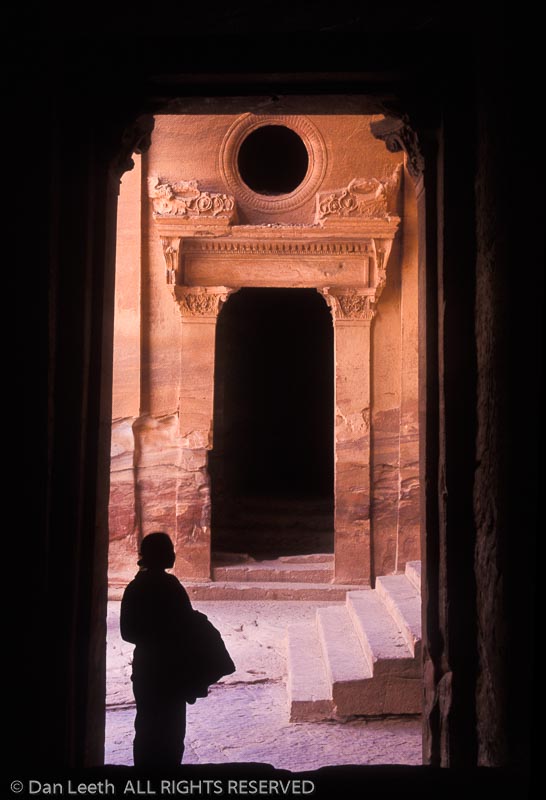
At the Jordanian port of Aqaba, four of us hired a taxi for a drive to Petra, the 2,300-year-old Nabataean city carved into the walls of a desert canyon. The driver agreed to $120 for the day. At journey’s end, he demanded $250, claiming he provided “extras.” The up-charge must have been for thrills he provided by playing chicken with oncoming traffic.
When we refused to yield to the gouging, the scene became ugly. Both sides threatened to call the police. Finally, we plopped $120 on the pavement and walked toward the ship. I kept glancing over my shoulder, half expecting to see squad cars and flashing lights. I just hoped Jordanian jails served decent coffee.
The World Cruise Company’s inaugural voyage was drawing to a close. By now, most of us had forgiven the ship’s shoddiness. The pain of heatless rooms and slow-draining showers had been more than offset by the journey’s extraordinary itinerary and education program.
Unfortunately, negative feedback eroded confidence back home. In spite of prices starting at about $100 per day, bookings for the second cruise faltered. When fuel costs tripled, the company was doomed. Our journey went full term. The follow-up on a different vessel folded mid-route, leaving passengers stranded Gilligan-like in Tahiti.
The idea of offering budget-priced, around-the-world voyages seems viable. Perhaps another company will continue the practice.
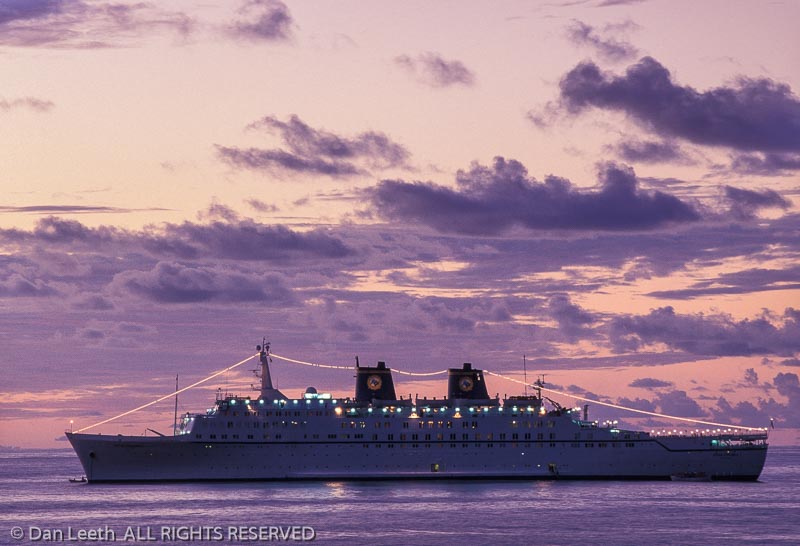
We sailed through the Suez Canal and stopped in Israel, our final port before Greece. I took a tour to Jerusalem. Ambling through the ancient walled city, I felt the holy auras of Islam, Judaism and Christianity. Before heading back to the ship, the bus made a rest stop at a small cafe and gift shop. It was called the Elvis Inn.
I had covered 27,646 nautical miles and explored 33 ports in 25 countries. Now I stood in perhaps the most revered city on earth. There before me, shadowed in the halo of the late day sun, rose a towering statue of Elvis. Transfixed in humbled awe, I gazed into the eyes of the gilded icon from Graceland.
Suddenly, everything made sense. It was time to go home.
